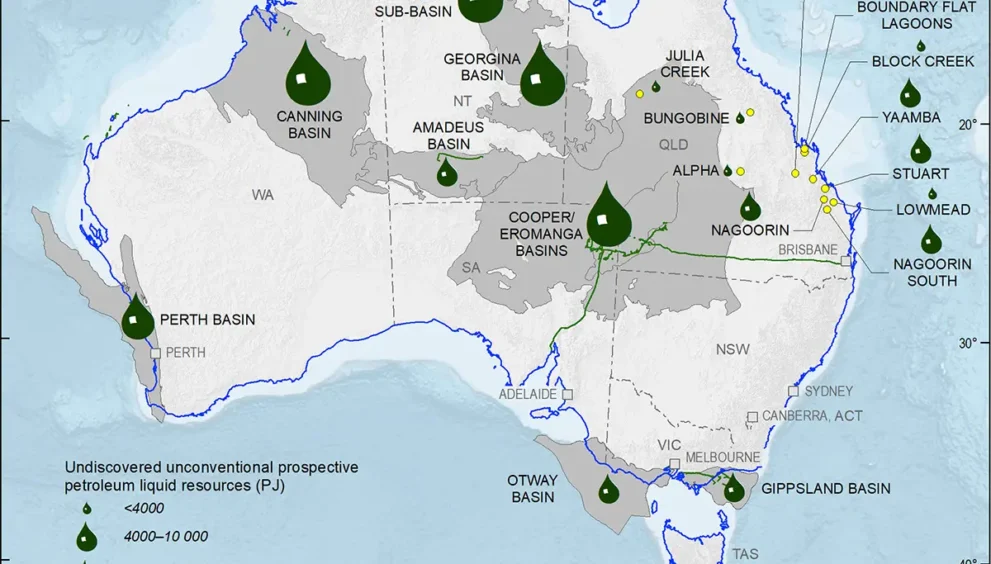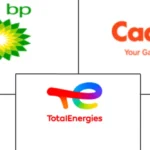Australian Oil and Gas Companies Adapt to Market Challenges and Energy Transition

Australian Oil and Gas Companies Adapt to Market Challenges and Energy Transition in 2025
Perth, Australia
Australia’s oil and gas industry, a cornerstone of the nation’s economy, is navigating a complex landscape in 2025, with major companies like Woodside Energy, Santos, and Chevron Australia facing declining production, global oversupply risks, and increasing pressure to align with net-zero goals. These firms are leveraging technological innovation, strategic partnerships, and low-carbon investments to maintain competitiveness. Insights from recent industry developments reveal how Australia’s energy giants are responding to these challenges while capitalizing on opportunities in LNG exports and petrochemicals.
Production Declines Amid Global Oversupply
Australia’s oil production is projected to decline from 143.74 thousand barrels per day in 2025 to 116.05 thousand barrels per day by 2030, reflecting a compound annual growth rate (CAGR) of -4.19%, according to Mordor Intelligence. Companies like Woodside Energy and Santos are grappling with maturing fields, particularly in the North West Shelf and Bass Strait, where output is expected to drop by 6% in 2025. To counter this, firms are focusing on capital discipline, with Woodside reducing exploration spending by 10% in 2025 to prioritize high-return projects like the Scarborough gas field. The global oil market’s anticipated surplus of 1.7 million barrels per day by early 2026, driven by OPEC+ production hikes, is adding downward pressure on Brent crude prices, forecast to fall from $68 per barrel in August 2025 to $50 per barrel in Q1 2026.
LNG Exports Drive Revenue
Australia remains a global leader in LNG exports, with companies like Chevron Australia and Woodside capitalizing on demand from Asia-Pacific markets, particularly China, Japan, and South Korea. The country’s LNG export capacity is expected to remain stable at 88 million metric tons per annum in 2025, with Chevron’s Gorgon and Wheatstone projects contributing 25 million tons annually. However, global LNG demand is projected to peak in 2025 before declining slightly through 2030 due to economic challenges in emerging Asian markets, according to the International Gas Union. To maintain competitiveness, Santos is investing $1.5 billion in its Darwin LNG facility to extend its operational life, targeting first gas from the Barossa project in late 2025.
Energy Transition and Sustainability Push
The Australian government’s Future Gas Strategy, aligned with net-zero by 2050, is pushing companies toward sustainable practices. Woodside Energy is leading with its $5 billion investment in the HydrogenOK project, aiming to produce 550,000 tons of green hydrogen annually by 2030. Carbon capture, utilization, and storage (CCUS) is also gaining traction, with Chevron Australia’s Gorgon CCUS facility capturing 4 million metric tons of CO2 annually, one of the world’s largest operational projects. However, a 2025 industry survey by Deloitte found that only 45% of Australian oil and gas executives are confident in scaling CCUS due to high costs and regulatory complexity, highlighting barriers to broader adoption.
Technological Innovation Boosts Efficiency
Australian companies are embracing digital technologies to optimize operations. Santos has implemented AI-driven predictive maintenance at its Cooper Basin assets, reducing downtime by 12% and cutting operational costs by 8% in 2024. Woodside’s use of digital twins in the Pluto LNG facility has improved production efficiency by 10%, enabling real-time monitoring and optimization. These advancements are critical as firms navigate a competitive global market and strive to extend the life of aging assets amidst declining domestic production.
Mergers and Workforce Dynamics
Mergers and acquisitions (M&A) are reshaping the sector, with 65% of Australian oil and gas companies planning deals in 2025 to enhance efficiency and access low-carbon technologies, according to GlobalData. Santos’s $4.8 billion merger with Oil Search in 2024 strengthened its LNG portfolio, while Woodside is exploring partnerships to fund its Scarborough project. Workforce challenges persist, with 3,000 jobs cut in 2024–2025 due to cost pressures, though companies like Chevron are retraining 1,500 workers for renewable energy roles, supported by government programs aiming to transition 5,000 workers by 2028.
Geopolitical and Policy Challenges
Geopolitical risks, including tensions in the Strait of Hormuz, which handles 21% of global petroleum liquids, could disrupt Australia’s crude exports, 60% of which go to Asia. Domestically, the government’s increased regulatory scrutiny and higher petroleum resource rent tax are deterring new investments, with the industry estimating a $10 billion shortfall in upstream projects by 2030. The EU’s planned halt of Russian LNG re-exports in March 2025 is boosting demand for Australian LNG, positioning companies like Woodside to fill supply gaps in Europe.
Petrochemical Sector Growth
Australia’s petrochemical industry is expanding, driven by demand for natural gas liquids (NGLs), which are expected to account for 18–20% of global oil demand by 2040. Santos’s Moomba gas plant is increasing ethane production to supply local petrochemical facilities, while global competition from Middle Eastern producers poses challenges. Digital technologies, such as AI-driven supply chain optimization, have helped companies like Woodside reduce refining costs by 7% in 2024, enhancing competitiveness.
Outlook for 2025
Australian oil and gas companies are at a critical juncture, balancing declining production and global oversupply risks with opportunities in LNG exports and the energy transition. Investments in CCUS, hydrogen, and digital technologies are positioning firms like Woodside, Santos, and Chevron for long-term resilience. As geopolitical and policy challenges persist, their ability to adapt will shape Australia’s role in the global energy market through 2030.







